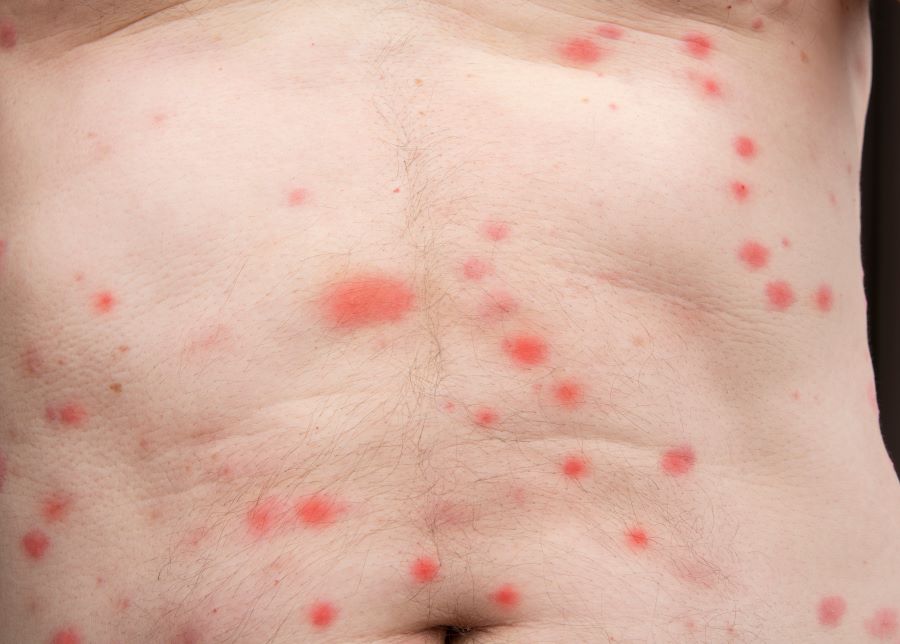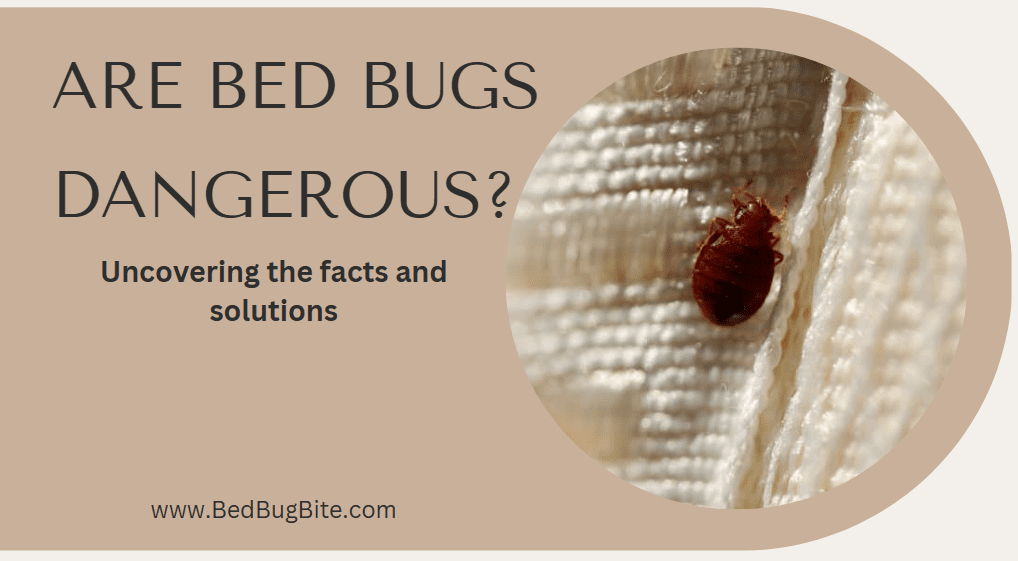Introduction: Are Bed Bugs Dangerous?
Have you ever flipped your pillow only to be greeted by tiny, flat insects scampering away? If so, you might have had a firsthand encounter with bed bugs. These small invaders, often the stuff of travel nightmares, frequent our homes, hotels, and even public transportation.
But the pressing question on everyone’s mind remains: are bed bugs dangerous? In this complete guide, we’ll uncover the facts and solutions. Discerning facts from myths and equipping you with the knowledge to address their unwelcome presence. So, whether you’re trying to identify an unfamiliar bite or taking preemptive measures, read on to become an informed advocate in the battle against bed bugs.
The Biology and Behavior of Bed Bugs
Spotting a bed bug may not be as straightforward as you think. These tiny critters, often no larger than an apple seed, boast a reddish-brown hue and possess a flat, oval shape. A design perfect for hiding in the tiniest of crevices. Understanding their life cycle reveals another layer of their resilience. A female bed bug can lay hundreds of eggs over her lifetime, each roughly the size of a speck of dust.
As these eggs hatch and grow, they shed their skins multiple times, evolving from nymphs to mature adults ready to feed. And speaking of feeding, bed bugs are hematophagous, meaning they sustain themselves by consuming human blood. Contrary to popular belief, these pests don’t just reside in beds. From luggage to furniture, their versatile nature allows them to claim diverse habitats. They are always lurking close to their next unsuspecting host.
The Physical Impact of Bed Bugs

Waking up to a trail of red, itchy welts can be an alarming experience. These marks are the telltale signs of bed bug bites. Unlike mosquitoes or fleas, bed bugs tend to feed in a linear pattern, often leaving a distinctive row of bites. Not everyone, however, reacts the same. While some may develop noticeable raised bumps, others might only experience subtle skin discolorations or, in rare cases, no visible signs at all. Beyond mere itchiness, a minority of individuals might exhibit allergic reactions to bed bug bites.
Symptoms can range from intense itchiness to more severe responses like swelling or blistered lesions. If you ever suspect you’ve been bitten and your skin showcases unusual or prolonged reactions, it’s imperative to seek medical advice, ensuring your well-being isn’t compromised by these bloodsuckers.
Psychological and Emotional Impact
The presence of bed bugs does more than just mar your skin. Their hidden toll can seep deep into the psyche. Constantly feeling under attack in what should be the safe space of your home often leads to sleep disturbances. Night after night, the dread of another bite can keep you tossing and turning, amplifying feelings of anxiety.
Over time, this incessant worry can snowball into chronic stress, which comes with its own slew of health implications. And it doesn’t stop there. The stigma attached to bed bug infestations can lead to feelings of embarrassment or isolation. It makes individuals hesitant to discuss their plight even with close friends or family. In understanding the multifaceted impact of these pests, it becomes clear: the fight against bed bugs isn’t merely skin-deep—it’s a battle for peace of mind.
Uncovering the Facts & Solutions
Drowning in a sea of misinformation, many people unknowingly hold onto bed bug myths that can lead them astray. One widespread misconception is the belief that bed bugs are carriers of diseases, transmitting them from one host to another. The truth? Scientific evidence consistently shows that bed bugs, while a nuisance, don’t transmit diseases to humans.
Another fallacy that needs debunking: only unkempt, dirty environments harbor bed bugs. These pests are indiscriminate hitchhikers, just as likely to settle in pristine homes or five-star hotels as anywhere else. And as for their nocturnal reputation? While bed bugs do prefer the cover of darkness, they aren’t strictly night owls; they can and will bite during the day if given the chance. By challenging these myths, we empower ourselves with knowledge, paving the way for more effective prevention and intervention strategies.
Prevention and Management
Knowledge is our first line of defense against bed bugs but putting that knowledge into action is where the real battle begins. To fortify your home against these unwelcome guests, regular inspections are crucial. Familiarize yourself with common bed bug hiding spots, like mattress seams, bed frames, or even behind wallpapers.
When traveling, always check hotel beds and keep your luggage elevated and away from walls. Prevention doesn’t stop when you return home; consider laundering your clothes on a high heat setting, as this can effectively kill any hitchhiking bugs. But what if you’ve already noticed signs of an infestation?
While some DIY treatments, such as vacuuming and the use of certain bed bug sprays, can offer temporary relief, professional extermination is often the most reliable route. After all, cutting corners could leave you with a recurring issue, making expertise and thoroughness essential in reclaiming your space from these persistent pests.
Concluding Thoughts
So, are bed bugs dangerous? As we draw our exploration of bed bugs to a close, one thing remains abundantly clear: these tiny intruders, while not always dangerous in a physical sense, carry a weight that transcends mere itchy bites. Their potential to disrupt our mental well-being and the very sanctity of our homes underscores the importance of staying informed and proactive.
As we debunk myths and adopt effective prevention strategies, we’re not just battling bugs; we’re championing our peace of mind. So, let’s move forward with understanding, armed with the tools and insights to not just react but to prevent, ensuring that we can rest easy, both literally and figuratively.
Resources and Further Reading
In our quest for a bed bug-free life, continued learning is our staunchest ally. While this guide has provided a comprehensive look into these pests and their impacts, a plethora of additional resources awaits those eager for deeper dives.
– Expert Insights: Websites like the Entomological Society of America and Pest World offer extensive research and findings, ensuring you stay updated with the latest in bed bug control.
– Research Studies: Platforms such as Google Scholar or PubMed house academic papers and studies, shedding light on the evolving understanding of bed bugs and their management.
– Personal Experiences: Forums like BedBugForum and dedicated Reddit threads allow individuals to share their stories, offering real-life insights and solutions from those who’ve been in the trenches.
Armed with these resources, you can fortify your knowledge base, ensuring that you’re not only reactive but also ahead of the curve when it comes to preventing and managing bed bug infestations.




